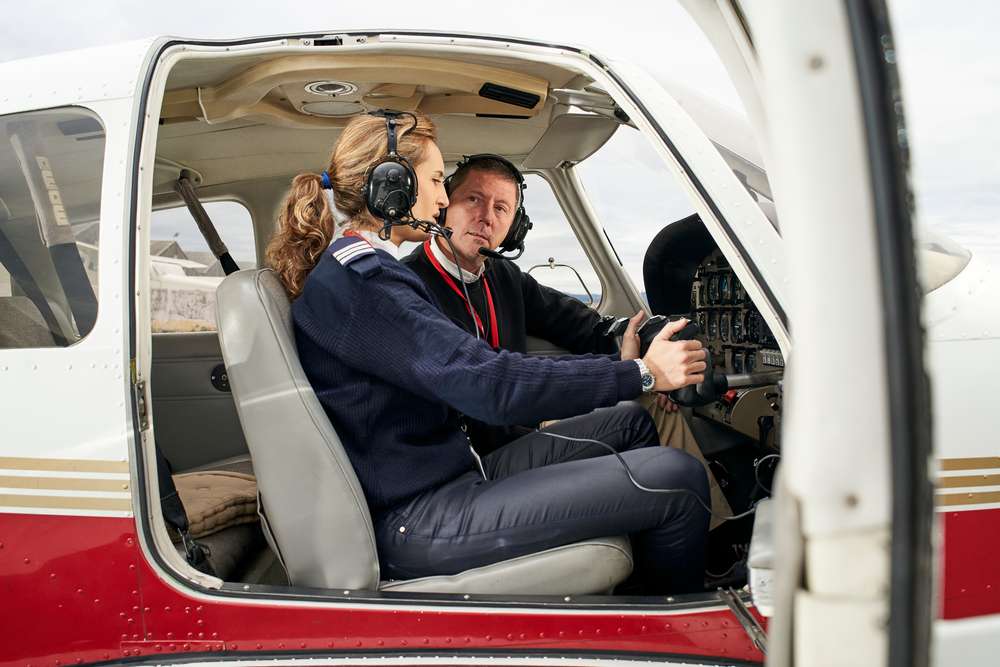Aviation Training Programs Available in the US
Aviation training programs in the United States prepare individuals for a range of careers in the air travel and aerospace industries. Whether you're aiming to become a pilot, aircraft technician, or work in airline operations, discover how to get started and what training options are available near you.

What types of aviation training programs are available in the US?
Aviation training programs in the US cater to various career paths within the industry. Some of the most common types include:
-
Pilot Training: This includes programs for private pilot licenses, commercial pilot licenses, and airline transport pilot licenses.
-
Aircraft Maintenance Technician (AMT) Programs: These programs prepare students for careers in aircraft maintenance and repair.
-
Air Traffic Controller Training: Offered through the Federal Aviation Administration (FAA) or approved institutions.
-
Aviation Management Programs: These focus on the business and operational aspects of the aviation industry.
-
Aerospace Engineering Programs: For those interested in aircraft design and development.
-
Flight Dispatcher Programs: Training for professionals who plan and monitor flight operations.
How long does it take to complete aviation training?
The duration of aviation training programs varies depending on the specific career path and level of certification sought:
-
Private Pilot License: Typically takes 3-6 months of part-time training.
-
Commercial Pilot License: Usually requires 12-18 months of full-time training after obtaining a private pilot license.
-
Aircraft Maintenance Technician: Programs generally last 18-24 months.
-
Air Traffic Controller Training: Initial training at the FAA Academy lasts about 12 weeks, followed by on-the-job training.
-
Aviation Management Degrees: Bachelor’s programs typically take 4 years to complete.
-
Aerospace Engineering Degrees: Bachelor’s programs usually require 4 years of study.
It’s important to note that these timeframes can vary based on individual progress, program intensity, and prior experience.
What qualifications do you need to start aviation training?
Qualifications for aviation training programs differ based on the specific field and level of study:
-
Pilot Training:
-
Must be at least 17 years old for a private pilot license (16 for student pilot certificate)
-
Pass a medical examination
-
Be able to read, speak, and understand English
-
-
Aircraft Maintenance Technician:
-
Must be at least 18 years old
-
Able to read, write, and understand English
-
High school diploma or equivalent
-
-
Air Traffic Controller:
-
Must be a United States citizen
-
Be no older than 31 years of age at the time of initial appointment
-
Pass medical and background checks
-
Have a bachelor’s degree or three years of progressively responsible work experience
-
-
Aviation Management and Aerospace Engineering:
-
High school diploma or equivalent
-
Strong background in math and science
-
Meet university admission requirements
-
Where can you find accredited aviation training centers in the US?
Accredited aviation training centers can be found throughout the United States. Some options include:
-
Flight Schools: Many local airports offer flight training programs.
-
Community Colleges: Several community colleges provide aviation-related programs.
-
Universities: Numerous universities offer comprehensive aviation and aerospace programs.
-
Technical Schools: Specialized schools focus on aircraft maintenance and other technical aspects of aviation.
-
FAA-Approved Training Centers: For air traffic controller training and certain pilot certifications.
To ensure the quality of education, look for programs accredited by organizations such as the Aviation Accreditation Board International (AABI) or approved by the Federal Aviation Administration (FAA).
What unique insights should aspiring aviation professionals know?
Aspiring aviation professionals should be aware that the industry is constantly evolving, with new technologies and regulations shaping the field. Ongoing education and adaptability are crucial for long-term success. Additionally, networking plays a significant role in career advancement, so joining professional organizations and attending industry events can be beneficial.
What job opportunities are available after completing aviation training?
Aviation training opens doors to a diverse range of career opportunities:
| Career Path | Typical Entry-Level Positions | Median Annual Salary (2020) |
|---|---|---|
| Pilot | Commercial Pilot, Flight Instructor | $130,440 |
| Aircraft Maintenance | Aircraft Mechanic, Avionics Technician | $66,680 |
| Air Traffic Controller | Air Traffic Controller Trainee | $130,420 |
| Aviation Management | Operations Coordinator, Flight Dispatcher | $97,230 |
| Aerospace Engineering | Aerospace Engineer | $118,610 |
Prices, rates, or cost estimates mentioned in this article are based on the latest available information but may change over time. Independent research is advised before making financial decisions.
These positions often serve as stepping stones to more advanced roles within the industry. As professionals gain experience, they may progress to senior management positions, specialized technical roles, or even start their own aviation-related businesses.
In conclusion, aviation training programs in the United States offer diverse pathways to exciting careers in the air travel and aerospace industries. From pilot training to aerospace engineering, these programs cater to various interests and skill sets. By choosing the right program and obtaining the necessary qualifications, aspiring aviation professionals can embark on rewarding careers in this dynamic and ever-evolving field.




